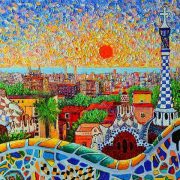Nei secoli a venire, poche cose resteranno incise più duramente nella memoria dell’Accordo fra Cina e Santa Sede del 22 settembre.
L’accordo riguarda anzitutto la divisione della sfera di interessi in Cina fra politica e religione. Costituisce inoltre un aiuto a una prossima modernizzazione della Cina.
Ma probabilmente è anche un passaggio rilevante per gli antichi turbolenti incontri fra Est e Ovest. Il vaticano è molte cose, ma è la continuità storica di migliaia di anni della civiltà occidentale.
Il governo cinese a sua volta è la continuità di tre millenni di storia. La normalizzazione comprende anche che per la prima volta queste due civiltà, due storie millenarie si trovino ad un incontro fra pari per la prima volta, in pace, senza la minaccia della guerra o i piccoli calcoli del commercio.
Queste considerazioni superano di gran lunga tutti gli altri elementi che sono e sono destinati ad essere molto controversi, ma che pure saranno riveduti nel tempo, come afferma l’Accordo.
Le due parti hanno mostrato grande coraggio e capacità di visione, rimuovendo secoli di reciproco sospetto e abbracciando un futuro che è aperto e tuttavia molto incerto.
Il presidente Xi Jinping per la prima volta ha constatato e riconosciuto il ruolo della Chiesa in Cina, e a papa Francesco e al suo segretario di Stato Pietro Parolin sarebbe per la prima volta consentito ufficialmente e pacificamente di entrare in Cina in un momento storico molto delicato.
I venti della guerra commerciale e persino della guerra fredda stanno soffiando forte in Cina. La Cina non è più il sogno rosa della stampa internazionale.
Molti sono scettici e diffidenti riguardo alla direzione che sta prendendo la Cina. Quindi è ancora più importante che proprio in questo momento la Santa Sede possa intervenire e portare aiuto nel mezzo di quelle tensioni.
I prossimi passi sono difficili da supporre, ma il recente annuncio della visita papale in Giappone l’anno prossimo è un’indicazione. Andando o tornando dal Giappone nel 2019, il papa potrebbe forse anche andare in Cina.
In centuries to come few things will be remembered more strongly than the September 22 agreement between China and the Holy See.
The agreement is about a first ever division of sphere of interests in China between politics and religion. It is about helping further modernization of China.
But possibly it is also something relevant for the old troubled meeting of the East and the West. The Vatican is many things but it is the historical continuity of thousands of years of western civilization.
The Chinese government is also the continuity of three millennia of history. The normalization entails also that for the first time these two civilizations, two millennial histories meet as equal for the first time, in peace, without the hatred of war or the petty calculations of trade.
These considerations far outweigh all other elements which are and are bound to be very controversial but also will be in time revised, as the agreement states.
The two sides have shown great courage and vision by removing centuries of mutual suspicion and embracing a future which is open and still very uncertain.
President Xi Jinping for the first time recognized and acknowledged the role of the Church in China and Pope Francis and his secretary of State Pietro Parolin for the first time enabled officially and peacefully to enter China in a very delicate historical moment.
Winds of trade war, and even Cold War are blowing strong around China now. China is no longer the pink-rosed dream of the international press.
Many are skeptical and wary about the direction China is taking. Then it is even more important that just at this time the Holy See can step in and help with those tensions.
The next steps are difficult to fathom, but the earlier announcement of the Papal visit to Japan next year is an indication. On his way to Japan or on his way back the Pope in 2019 perhaps could also go to China.






Era ora!!!
io credo che il signore del piano di sopra alimentera’ il fuoco della riconciliazione.